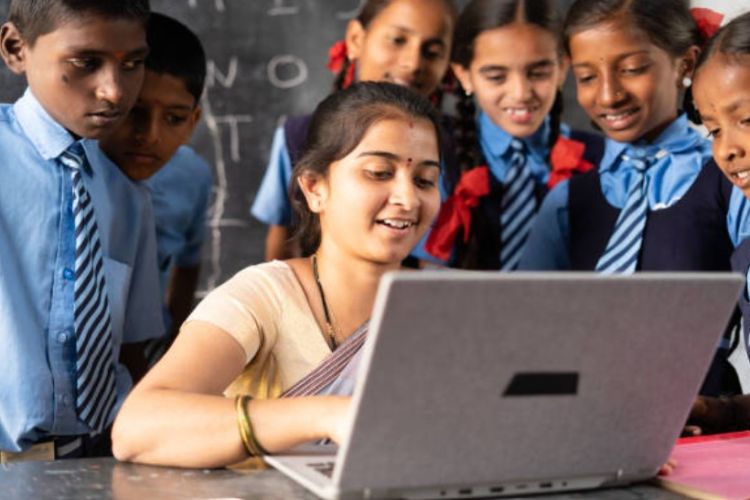
Teacher training programme: Technology is advancing at breakneck speed, and India risks falling behind unless its schools change the way they teach. The country’s education system continues to emphasise rote learning and exam performance, rather than preparing students to thrive in a world shaped by artificial intelligence, robotics, and rapid disruption. Without a revolution in how the nation learns, India will remain steps behind developed economies.
The Central Board of Secondary Education (CBSE) has announced 14 new Capacity Building Programmes (CBPs) under its Prashikshan Triveni initiative. The move aligns with the National Education Policy (NEP) 2020, which stresses competency-based and holistic learning. The CBPs aim to improve teachers’ subject expertise, broaden their pedagogical toolkit, and provide structured session plans for classroom practice. Subjects range from Hindi, Sanskrit, and economics to STEM, painting, and even value education through sports.
READ | Erosion of US hegemony speeds up under incoherent policy
The initiative rests on the belief that teachers who continue to learn and adapt will enable students to do the same. But the real test is whether these programmes translate into improved learning outcomes.
Why design matters in teacher training
Research shows that well-designed professional development boosts teacher confidence, deepens subject understanding, and encourages learner-centred methods. International reviews of STEM-focused training have documented strong gains in teacher self-efficacy and student engagement. But the impact is lasting only when workshops are continuous, tied to classroom realities, and not one-off “drive-by” sessions that fade without effect. For CBSE’s CBPs to succeed, sustained design and follow-up are crucial.

Teacher training alone cannot fix India’s education deficit. The curriculum itself needs reform. Despite NEP 2020’s emphasis on competency-based learning, classroom practice continues to prioritise memorisation over problem-solving. Students learn formulas, historical dates, and grammar rules, but falter when asked to apply knowledge to real-world challenges. Such an approach produces technically qualified graduates who remain ill-prepared for innovation-driven workplaces.
Equally important is integrating STEM with the arts and humanities to mirror the interdisciplinary nature of modern problems. Countries that combine analytical rigour with creativity are better placed to foster adaptable citizens.
Teachers remain the pivot of any reform. A modern curriculum is hollow without capable educators, just as well-trained teachers are underutilised when tied to outdated syllabi. India must pursue both goals in tandem—investing in teachers and updating what they teach. CBSE’s new programmes are a welcome start, but their reach and quality will decide their impact.
Rural-urban divide in education
A bigger challenge lies in rural India. Many schools lack even basic infrastructure, let alone access to digital tools or quality professional development. Teachers in these settings often work in isolation, without peer networks or mentors. This risks widening the gap between rural and urban learning outcomes.
Targeted interventions are essential—digital innovation, regional hubs of excellence, and professional learning communities can help. Examples from Canada show that rural networks, aided by digital tools, can create collaboration despite geographic constraints. India must adapt similar models to ensure equitable teacher growth.
Learning from global leaders
Countries like Finland and Singapore embed teacher training into the workday, backed by institutional frameworks and societal respect for the profession. In contrast, teaching in India has lost the social standing it once enjoyed. Restoring that respect, alongside systemic support, is vital if reforms are to take root.
For India, the message is clear: curriculum reform and teacher training are not optional but essential investments in national competitiveness. Both must move together, not in silos. If schools continue preparing students for yesterday’s world, India will continue to lag global peers.
The CBSE initiative is a step in the right direction, but it will need scale, consistency, and rural outreach to make a difference. The classroom of the future will demand continuous teacher development—and India cannot afford to delay.
